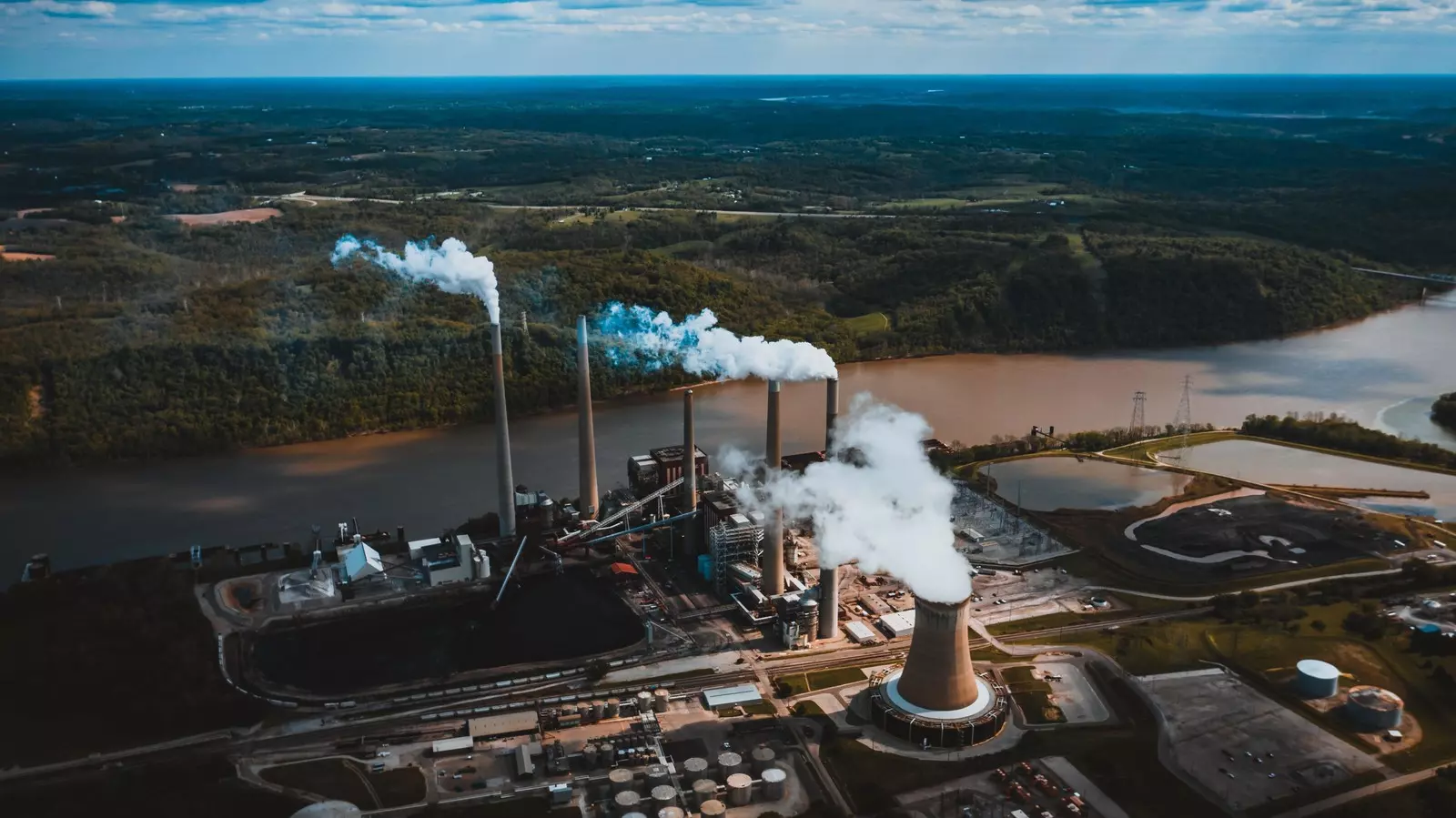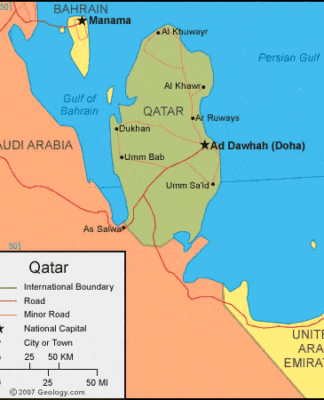OIL AND GAS
Fossil fuels 101: Everything you need to know
Mar 29, 2023
This article is published in collaboration with
EcoWatch
There are three main types of fossil fuels: coal, crude oil or petroleum, and natural gas.
Image: Pexels/Kelly
Olivia Rosane
Freelance Reporter, Ecowatch
Share:
OUR IMPACT
What’s the World Economic Forum doing to accelerate action on Oil and Gas?
THE BIG PICTURE
Explore and monitor how Oil and Gas is affecting economies, industries and global issues
CROWDSOURCE INNOVATION
Get involved with our crowdsourced digital platform to deliver impact at scale
Stay up to date:
Oil and Gas
Quick Key Facts
Fossil fuels still make up more than 80 percent of the world’s energy mix.
More than half of the weight of a piece of coal comes from fossilized plants.
Coal is the dirtiest fossil fuel in terms of both carbon dioxide emissions and other air pollutants and is the single greatest source of carbon dioxide emissions worldwide.
Offshore oil drilling platforms are some of the largest human-made structures on Earth.
When natural gas is burned, it emits nearly 30 percent less carbon dioxide than oil and 45 percent less than coal, but it is still responsible for a fifth of carbon dioxide emissions.
Around 500 B.C.E., Chinese engineers used bamboo pipes to transport natural gas for heating.
Since the industrial revolution, the atmospheric concentration of carbon dioxide has risen from around 280 parts per million (ppm) to more than 400, and global temperatures have risen by around one degree Celsius.
If we want to limit global temperature rise to 1.5 degrees Celsius above pre-industrial levels and avoid the worst impacts of the climate crisis, we can’t develop any more new fossil fuel reserves beyond what was planned as of 2021.
One study found that particulate matter from the burning of fossil fuels — in particular coal, diesel and gasoline — was responsible for nearly one in five yearly deaths.
The largest marine oil spill in U.S. history and the worst to impact an inland waterway both occurred in 2010.
What are fossil fuels?
Fossil fuels are fuels that literally come from fossils. Tens of millions of years ago, plants took energy from the sun and used it to turn carbon dioxide and water into carbon and hydrogen via photosynthesis. Animals ate those plants and stored the same elements in their bodies. Over time, the ancient lifeforms died and sank into the earth, where heat and pressure transformed them first into peat or kerogen and then into fossil fuels. Most existing deposits of fossil fuels were first formed 540 to 65 million years ago.
When extracted from underground or underwater, fossil fuels are extremely potent sources of energy when burned. They are used to fuel industry and transportation as well as to generate electricity. In addition, many chemicals including those that make up plastics and pesticides are derived from fossil fuels. Currently, fossil fuels still make up more than 80 percent of the global energy mix, but they are also responsible for around three quarters of the greenhouse gas emissions that cause the climate crisis. That is why transitioning the global energy system away from fossil fuels is an urgent challenge.
What are the main types of fossil fuels?
There are three main types of fossil fuels: coal, crude oil or petroleum, and natural gas.
Coal
Coal comes from fossilized plants that have been heated and pressurized through a process called carbonization. Coal typically begins its life as peat, a substance made of decaying plants that is itself burned for fuel in many parts of the world. When peat is further heated and pressurized, it becomes coal. A single foot of coal will have come from ten feet of plant matter, and more than 50 percent of the weight of each piece of coal must be compressed plant matter. Coal is typically found in sedimentary rock in “seams” or “beds” that can be up to 920 miles long and 90 feet thick.
There are four types — or ranks — of coal categorized by how long the material has undergone carbonization and therefore how much energy it contains to burn. The more time it has spent cooking, so to speak, the higher the quality of the coal. Higher quality coal is also harder and found deeper underground. From lowest to highest rank, the four types of coal are lignite, subbituminous, bituminous and anthracite.
Coal is the cheapest fossil fuel and the world’s leading source of electricity generation.
Coal is the cheapest fossil fuel and the world’s leading source of electricity generation. Image: REUTERS/Daniel Becerril
Coal is typically extracted via mining — either through surface or underground mining. Surface mining means shoveling away all earth and vegetation over a coal deposit less than 200 feet deep so that it can be collected. Underground mining means that miners must travel beneath the ground in a shaft to access coal deposits as much as 1,000 feet deep and then use machinery to bring the coal to the surface. Surface mining is both cheaper and more environmentally damaging than underground mining, which is more dangerous for the workers.
Coal can either be burned directly as fuel or used to generate electricity in coal-fired plants, which is the main way it is used in the U.S. It is also used in various industrial processes, including the making of steel. Coal is the cheapest fossil fuel and is currently the leading source of electricity generation in the world, providing about a third of global power. However, it is also the most polluting fossil fuel, both in terms of the amount of carbon dioxide it releases into the atmosphere — it is also the single greatest source of carbon dioxide emissions worldwide — and in terms of the other air pollutants like mercury, lead, sulfur dioxide, nitrogen oxides and particulate matter it emits when burned.
Oil / Petroleum
Crude oil and petroleum are two names for a liquid fossil fuel formed from deposits of decaying plankton that have been turned by time, heat and pressure into hydrocarbons, or compounds of hydrogen and carbon. It is usually black or dark brown in appearance but can also have a yellow, red, tan or green tint. It is found in the dried basins of ancient seas, which are called sedimentary basins. This is where the ancient plankton settled, at first forming a substance called kerogen, shale rock or oil shale. If it was heated and pressurized further through a process called catagenesis, the kerogen became either crude oil or natural gas. Over time, crude oil tends to seep upward to where there is less pressure until it is blocked by impermeable rocks and settles in reservoirs. Today, it can be found below the sea bed or underground, though sometimes it makes it to the surface in ponds or tar pits.
Crude oil is categorized in different ways according to where it was found, its sulfur content or its density. “Sour” oil with 0.5 percent sulfur or more is generally cheaper and less desirable than “sweet” oil with less than 0.5 percent sulfur, because it leads to more pollution and can harm refining equipment. Similarly, “light” oil — which floats on water — is considered more desirable than “heavy” oil, which sinks in water. The lighter oil has more hydrocarbons and fewer additional materials like metals and sulfur. Another type of oil, which tends to be heavier, is bitumen. This is a black, sticky oil that often rises to the surface and mixes with tar or oil sands. It is both expensive and environmentally harmful to process, releasing 12 percent more carbon dioxide emissions than conventional oil.
Oil derricks are seen at the Kern River oil fields in California. Fossil fuel
Crude oil is typically extracted through drilling. Image: REUTERS/Mike Blake
Crude oil is typically extracted via drilling. On land, it is usually drilled using an oil rig or a drilling rig. Offshore, it is drilled using an offshore platform that either floats over a tether connecting it to the sea floor or is held up by concrete or steel. Because they need to remain stable in stormy weather and house scores of workers, oil platforms are some of the largest human-made structures on Earth. Once oil has been drilled, it still needs to be refined. This is the process of boiling petroleum until it separates into liquids and gases that can be turned into different petroleum products.
An offshore oil and gas platform. Fossil fuel
Offshore oil platforms can either float or be connected to the sea floor. Image: REUTERS/Nerijus Adomaitis
Two of the most important petroleum products are gasoline and diesel. Gasoline is typically used to transport people in light-duty vehicles like cars, while diesel is more often used to move goods in trucks or to power generators. Jet fuel is also petroleum based. In the U.S., around 90 percent of transportation energy use in 2021 came from petroleum products. Other uses of refined petroleum include the chemical building blocks of several products including plastics, pesticides and artificial limbs. The reliance of transportation on gasoline and diesel means it’s the global sector currently most dependent on fossil fuels. Transit caused 37 percent of end-use carbon dioxide emissions in 2021. Petroleum use overall is responsible for around a third of cumulative carbon dioxide emissions.
Natural gas
Natural gas is, as its name suggests, a fossil gas primarily composed of methane, a hydrocarbon with one carbon atom and four hydrogen atoms. Methane has 80 times the heat-trapping potential of carbon dioxide during its first 20 years in the atmosphere, though it degrades more quickly. Like petroleum, natural gas is typically formed from decomposed plankton, but it can also be formed from coal. It requires more heat than crude oil, and is typically found near petroleum. The deeper a reserve, the more natural gas it is likely to have.
Natural gas is generally sorted into two types: conventional and unconventional. Conventional gas is found in permeable material beneath impermeable rock and is relatively easy and cheap to extract. Unconventional gas is harder to extract. One example is shale gas, which is appropriately enough, found between layers of the impermeable rock shale.
Natural gas is typically extracted from the Earth via vertical drilling, though horizontal drilling is also possible. However, in recent decades a controversial method of extracting gas from shale and other rock formations has emerged. This is called “hydraulic fracturing,” or “fracking” and involves forcing water, chemicals and frac sand down a well to break up the shale and access the gas. The problem with fracking is that it can use up local water supplies and harm the animals that rely on aquatic ecosystems, produce dangerous wastewater and trigger earthquakes. Once natural gas is extracted, it is processed to separate out natural gas liquids, as well as water vapor and other non-hydrocarbon materials. It can also be cooled to form liquified natural gas (LNG), which is easier to move and store.
A WPX Energy natural gas drilling rig with mountains behind it. Fossil fuel
Natural gas powers a lot of electricity generation in the US. Image: Reuters
Natural gas is used for heating and cooking, as well as transportation. Worldwide, it is responsible for around 25 percent of electricity generation. In the U.S., it was the largest single source of electricity generation at around 38 percent in 2021. Natural gas is sometimes proposed as a “bridge fuel” in the transition to renewable energy because when burned it emits nearly 30 percent less carbon dioxide than oil and 45 percent less than coal. However, it is still responsible for around a fifth of global carbon emissions, and there is growing evidence that the extraction and transportation of natural gas leaks more methane than previously believed. For example, a Stanford study found that natural gas production in New Mexico’s Permian Basin had a methane leak rate of more than nine percent, which would make Permian gas worse for the climate than coal.
What are the main fossil fuel producing countries?
Worldwide, there are significant oil deposits in the Middle East, North America, Russia, China, Nigeria, Venezuela, Brazil, Kazakhstan and Libya and important coal reserves in China, Russia, the U.S., India and Australia. Most of the world’s natural gas is in Russia, Europe and the MIddle East.
DISCOVER
What’s the World Economic Forum doing about the transition to clean energy?
Coal
The top five coal producing countries in 2021 were China, India, Indonesia, the U.S. and Australia.
Crude oil
The top five oil producing countries in 2021 were the U.S., Saudi Arabia, Russia, Canada and China. In addition, members of the Organization of Petroleum Exporting Countries (OPEC) are extremely influential on the global oil market. OPEC’s 13 members work to maintain a unified front and set the global price for oil. Currently, its members are Iran, Iraq, Kuwait, Saudi Arabia, Venezuela, Algeria, Angola, Congo, Equatorial Guinea, Gabon, Libya, Nigeria, and the United Arab Emirates.
Natural gas
The top five natural gas producing countries in 2021 were the U.S., Russia, Iran, China and Qatar.
What are the main fossil fuel companies?
Extracting, processing and providing fossil fuels remains an extremely lucrative business, and several multinational corporations have amassed significant profits doing so.
Coal
In 2022, the top five coal companies by stock value were the Australian-based BHP Group, the Anglo-Australian Rio Tinto, the U.S.-based ConocoPhillips, the Brazilian Vale and the China Shenhua Energy Company.
Crude oil
As of 2022, the top five biggest oil companies by their most recent 12 months of revenue were Saudi Aramco, China Petroleum & Chemical, PetroChina, ExxonMobil and Shell. Other important and influential players include France’s TotalEnergies, BP, Chevron and Norway’s Equinor.
Natural gas
Based on their 2021 production, the top five natural gas companies were Russia’s state-owned Gazprom, China National Petroleum — which is largely organized under PetroChina — China’s Sinopec, ExxonMobil and BP. As you can see, there is significant overlap between the major players in the oil and gas sectors.
A history of fossil fuel use
Fossil fuels have been used for heating and other purposes since ancient times. For example, Chinese engineers developed a way to transport natural gas via bamboo pipes around 500 B.C.E, the ancient Egyptians used bitumen in their mummies and the Roman Britons used coal to heat their baths. However, the use of fossil fuels really took off in 1765, when Scottish inventor James Watt perfected the steam engine. The coal-powered engine facilitated the Industrial Revolution by making it possible to run large factories and move goods by rail and ship.
The “modern oil era” is said to have begun in 1859 when Edwin Drake drilled the first successful well in Titusville, Pennsylvania. OIl and gas were used for heating and lighting until the invention of electricity in 1882. However, the invention of the automobile in the late 1800s provided a new use for petroleum products in the form of gasoline, and the first gas pump was made in Fort Wayne, Indiana, in 1885. The oil industry played a major role in fueling vehicles during World War II, and research during the war expanded the range of petroleum products. In 1964, oil became the world’s leading energy source, surpassing coal.
Despite the advances precipitated by fossil fuel use, a problem emerged. Scientists had theorized since the 19th century that burning coal and other fossil fuels could increase atmospheric carbon dioxide and therefore raise global temperatures, but, in 1958, Scripps geochemist Charles Keeling found a way to actually measure atmospheric carbon dioxide. His “Keeling curve” continues to prove that carbon dioxide levels are rising. Models in the 1960s began to predict how that upwards curve might influence temperature, but the alarm was truly sounded in 1988 when summer temperatures reached their hottest on record (at the time) and NASA scientist James Hansen testified before Congress that he was “99 percent sure” the climate was getting warmer.
It has since been revealed that several major oil companies including ExxonMobil, Shell and lobby group the American Petroleum Institute knew with astounding accuracy the threat their product posed to the global climate from the late 1970s on. Instead of changing their business model, however, they chose to promote climate denial to the public and lobby against government climate action. Now, we are at a point at which we need to rapidly transition our energy system away from fossil fuels in order to limit global temperature rise to 1.5 degrees Celsius beyond pre-industrial levels and avoid the worst impacts of global heating.
People often protest against the use of fossil fuels.
People often protest against the use of fossil fuels. Image: Pexels/ Robin Erino
What is the problem with fossil fuels?
Fossil fuels pose several threats to the environment and human well-being, both globally and locally.
Climate change
When fossil fuels are burned, they release carbon dioxide and other greenhouse gases into the atmosphere. These gases are called greenhouse gases because they trap heat that would otherwise escape out towards space through something called the “greenhouse effect.” Before the industrial revolution, the concentration of carbon dioxide in the atmosphere was at around 280 parts per million (ppm). Now, it is at more than 400 ppm. During that time, global temperatures have risen by around one degree Celsius, and coal use alone is responsible for more than 0.3 degrees Celsius of that rise. The rise in temperatures has already been felt in more extreme weather events, sea level rise and biodiversity loss. These effects will only amplify if emissions are not limited as soon as possible. To halt temperature rise at 1.5 degrees Celsius, we must halve emissions within 11 years and not develop any new fossil fuels beyond those planned as of 2021.
Carbon dioxide and nitrogen oxides are emitted when fossil fuels are burned.
Carbon dioxide and nitrogen oxides are emitted when fossil fuels are burned. Image: REUTERS/Daniel Munoz
Other air pollution
Carbon dioxide isn’t the only thing emitted into the air when fossil fuels are burned. They can also release nitrogen oxides, which contribute to smog and acid rain. Coal, gasoline and diesel also emit particulate matter pollution, which has a number of serious health effects when ingested. A 2021 study found that particulate matter pollution from fossil fuels killed around 8.7 billion people in 2018, which amounts to around a fifth of yearly deaths. U.S. coal plants are responsible for more than a third of the country’s dangerous mercury emissions and two-thirds of its sulfur dioxide emissions.
Oil spills
One of the dangers of oil use in particular are oil spills. Oil spills can occur when pipelines leak, shipping containers run aground or drilling errors occur, and their impacts can linger for decades. They can harm marine wildlife both by coating animals with oil or releasing toxic chemicals into the environment. The largest ocean oil spill in U.S. history was the Deepwater Horizon oil spill of 2010, in which a BP drilling platform exploded in the Gulf of Mexico, killing 11 workers and spewing four million barrels of oil into the Gulf. The spill led to the deaths of up to 800,000 birds, as many as 166,000 young sea turtles and caused more than 75 percent of bottlenose dolphin pregnancies in the area to fail. Oil spills can occur on land or in freshwater too. Also in 2010, the U.S. saw its worst spill on an inland waterway when an Enbridge pipeline ruptured and spilled more than a million gallons into Michigan’s Kalamazoo River, according to U.S. Environmental Protection Agency estimates.
One of the dangers of oil extraction is oil spills, but fossil fuels can pollute water in other ways as well.
One of the dangers of oil extraction is oil spills, but fossil fuels can pollute water in other ways as well. Image: REUTERS/U.S. Coast Guard
Other water pollution
Fossil fuels can pollute water in other ways as well. If it’s not stored correctly, coal ash from coal power plants can contaminate groundwater and drinking water with toxins like mercury, cadmium, and arsenic. Runoff from coal mining can also pollute waterways. Fracking has been found to contaminate the groundwater near where it occurs.
Habitat destruction / Biodiversity loss
Beyond oil spills, the extraction of fossil fuels and the construction of transportation and storage infrastructure like pipelines can damage habitat for breeding or migrating animals. Strip mining is especially devastating because it literally involves removing everything growing above where coal is found. One particularly egregious example is mountaintop removal. In this coal-mining method, mining companies use explosives to blow away the tops of mountains, which harm the wildlife of the hardwood Appalachian forests where it occurs. Fossil fuel extraction can also contribute to deforestation when oil is found in vulnerable rainforests like the Amazon or the Congo.
Have you read?
Analysis: Global CO2 emissions from fossil fuels hits record high in 2022
Spending on low-carbon energy technology is on the brink of overtaking fossil fuels. These 4 charts tell the full story
Will we ever stop using fossil fuels?
Workers’ rights
As the case of the Deepwater Horizon explosion indicates, working in the fossil fuel industry can be extremely dangerous. Between 1968 and 2011, 77 people died and 7,550 people were injured in onshore and offshore oil production in the U.S. alone. Coal mining especially can be extremely dangerous, leading to thousands of yearly deaths worldwide from mine collapses or other accidents. Beyond that, workers can develop chronic health problems like the infamous “black lung.” In the U.S., coal mining has gotten safer over time, with the fatality rate falling by 75 percent between 1970 and 2011, but 29 coal miners died in a West Virginia explosion as recently as 2010.
Impacts on frontline communities
The fossil fuel industry can also have a devastating impact on the health of the people who live near to where it is extracted, transported or refined. Exposure to these activities has been linked to health risks including cancer and heart disease, and 17.6 million U.S. residents live within a mile of an oil or gas well. Low income or minority communities are more likely to be burdened with fossil fuel infrastructure. For example, the land along the Mississippi River between New Orleans and Baton Rouge, Louisiana, has earned the name Cancer Alley because of the number of petrochemical plants built there, especially close to Black and low-income communities. Another example of the potential devastation of fossil fuel use is Nigeria’s Niger Delta, where around 4.6 million gallons of oil have spilled since Shell first discovered it there in 1956, representing “an immediate danger to public health.”
Nuclear power offers a possible alternative to fossil fuels.
Nuclear power offers a possible alternative to fossil fuels. Image: REUTERS/Benoit Tessier
Are there any benefits to fossil fuels?
So if fossil fuels are so bad, why do we use them? The answer is that fossil fuels have transformed energy and transportation worldwide and are often credited with raising living standards globally during the 20th century. They provide a high amount of energy per unit burned and are currently easy to find and relatively affordable. Before the widespread use of fossil fuels, people mostly had to burn biomass for fuel, like wood, which led to both pollution and a drain on supply. Fossil fuels transformed society by giving us access to solar energy stored up over millions of years.
What can be done instead of fossil fuels?
However, even if they weren’t transforming the climate, we would still have to stop using fossil fuels eventually. That’s because they are a non-renewable resource that took millions of years to form, a process that cannot be replicated on a human time scale. The climate crisis only ups the urgency of transitioning to truly renewable forms of energy. Prominent alternatives include solar, wind, geothermal, nuclear and hydropower.
wind power solar energy storage transmission fossil fuels
Solar and wind power are key sources of renewable energy. Image: REUTERS/Jason Lee
Takeaway
For better and worse, fossil fuels have had an outsized impact on both human society and the environment since the Industrial Revolution. They have made possible things like mass production and the Great American Road Trip, but have had a devastating impact first on nearby ecosystems and communities and then on the entire planet. We have reached the point in the history of fossil fuel use when we must either transition our energy system away from them or burn ourselves to death on their fumes.
Don’t miss any update on this topic
Create a free account and access your personalized content collection with our latest publications and analyses.
License and Republishing
World Economic Forum articles may be republished in accordance with the Creative Commons Attribution-NonCommercial-NoDerivatives 4.0 International Public License, and in accordance with our Terms of Use.
The views expressed in this article are those of the author alone and not the World Economic Forum.
Related topics:






























